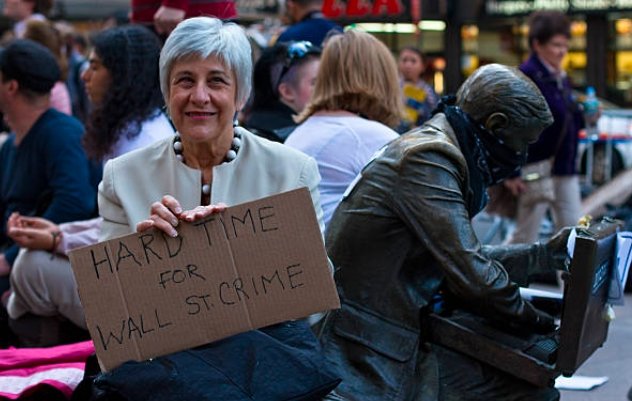A 75-year-old grandmother named Rose Docherty was arrested for the second time this year in Glasgow, Scotland, for holding a sign outside a hospital under new buffer zone laws. The incident happened on September 27, 2025, near the Queen Elizabeth University Hospital, where she offered talks to people facing tough choices, sparking debates on free speech and abortion rights.
Details of the Latest Arrest
Police approached Docherty while she stood silently with a sign reading “Coercion is a crime, here to talk, if you want.” Officers cited the Abortion Services (Safe Access Zones) (Scotland) Act 2024, which bans protests within 200 meters of abortion facilities to protect patients from harassment.
This marks her second run-in with the law this year. In February 2025, she faced similar charges for the same sign at the same location, but prosecutors dropped the case in August after she refused to accept a warning. Authorities returned her sign, yet she returned to protest, leading to this fresh arrest.
Witnesses described the scene as calm until police arrived. Docherty, who recently had double hip surgery, struggled to enter the police van and had to crawl in. She spent about two hours in a cell and was reportedly denied a chair despite her age and health issues.
Supporters argue her actions were peaceful and aimed at helping those feeling pressured. Critics say buffer zones are essential to ensure safe access to medical services without intimidation.

Background on Scotland’s Buffer Zone Law
The Abortion Services Act 2024 came into effect earlier this year, creating safe zones around clinics and hospitals offering abortion services. It prohibits activities like handing out leaflets, preaching, or holding silent vigils that could influence or distress people seeking care.
Scotland introduced this law to address complaints from patients and staff about protesters. Similar rules exist in other parts of the UK, including England and Wales, where a 150-meter zone under the Public Order Act 2023 criminalizes actions that might obstruct or harass, even including silent prayer.
Advocates for the law point to studies showing that protests can increase stress and delay care for women. For example, a 2024 report from a women’s health group highlighted cases where patients felt unsafe approaching clinics due to crowds.
Opponents claim it restricts free expression. Legal experts note that courts have upheld such zones in places like Canada and Australia, balancing rights with public safety.
Here is a quick overview of key buffer zone laws in the UK:
| Region | Law Name | Zone Size | Prohibited Activities |
|---|---|---|---|
| Scotland | Abortion Services (Safe Access Zones) Act 2024 | 200 meters | Protests, vigils, leafleting |
| England and Wales | Public Order Act 2023 (Section 9) | 150 meters | Influencing, obstructing, harassing |
| Northern Ireland | Abortion Services (Safe Access Zones) Act (Northern Ireland) 2022 | 100-150 meters (varies) | Any protest activity |
This table shows how these laws aim to standardize protections while varying in scope.
International Reactions and Broader Implications
The arrest drew quick backlash from abroad. On September 28, 2025, the Trump administration condemned the action, calling it a breach of free speech. A US State Department statement urged governments worldwide to protect expression, echoing earlier concerns from figures like JD Vance, who criticized Scotland’s zones in an April 2025 speech at the Munich Security Conference.
Human rights groups have mixed views. Some praise the zones for safeguarding vulnerable people, while others warn of a slippery slope toward censorship. In the US, similar debates rage over clinic protests, with federal laws protecting access but allowing peaceful demonstrations.
This case ties into global trends. In 2025, countries like France and Spain strengthened their own buffer zones amid rising anti-abortion activism. Logical reasoning suggests that as societies grapple with reproductive rights post major court rulings, such as the US Supreme Court’s ongoing reviews, tensions will persist.
Docherty’s supporters, including faith-based legal teams, plan to challenge the charges. They argue her offer of conversation does not equate to harassment and that the law overreaches.
Docherty’s Personal Story and Motivations
Rose Docherty, a grandmother of two, describes herself as motivated by compassion. She has spoken publicly about her desire to support women facing coercion, drawing from personal experiences and a belief in open dialogue.
In statements after her first arrest, she emphasized that consensual talks should not be criminalized. “I stand with love, not judgment,” she said, highlighting her peaceful approach without approaching anyone directly.
Her case has inspired online discussions, with many sharing stories of similar arrests. For instance, in England, a veteran was charged in 2024 for silent prayer near a clinic, later acquitted on appeal.
Supporters have launched petitions and fundraisers for her legal defense. Key points from her defense include:
- The sign explicitly offered optional talks, not imposition.
- No evidence shows she distressed anyone.
- Her actions align with free speech protections under human rights laws.
These elements build a case that could set precedents for future challenges.
What This Means for Free Speech and Abortion Rights
This arrest highlights the ongoing clash between protecting medical access and upholding expression rights. As buffer zones expand, questions arise about where lines are drawn. For example, does silent standing count as influence? Courts may soon decide.
In Scotland, police have made few arrests under the new law, but this high-profile case could encourage more enforcement. It also reflects broader 2025 trends, like increased global scrutiny on reproductive policies after elections and referendums in several nations.
Experts predict more legal battles. A recent analysis from a European rights institute suggests that while zones reduce harassment, they must be narrowly tailored to avoid violating conventions like the European Convention on Human Rights.
For readers concerned about these issues, staying informed on local laws is key. If you’re in the UK, check guidelines from health authorities for clinic access rules.
What do you think about buffer zones? Share your thoughts in the comments below, and pass this article along to spark discussions with friends and family.


















